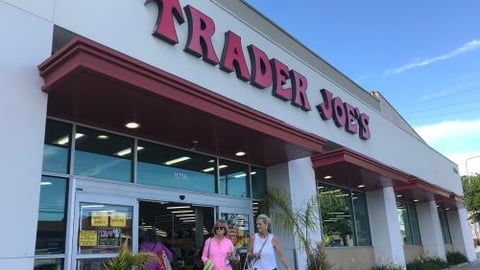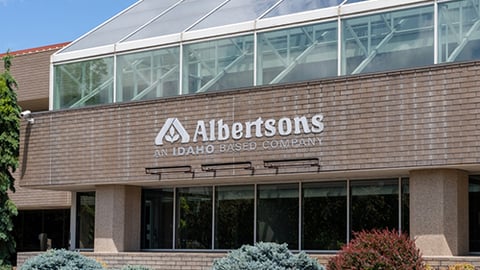EXCLUSIVE: How Food Marketing Moves the Needle
Every year, the Food Marketing Conference (FMC) at Western Michigan University (WMU) brings together leaders at several retail, CPG and solution provider organizations to share insights and advice to a crowd that includes WMU food marketing students and professional industry colleagues. That combined spirit of undergraduate education and continuing education was exemplified in this year’s stacked agenda and in key takeaways from the presentations.
In addition to the common theme of embracing opportunities for career and personal advancement, the panelists shared trends that continue to shape the food marketing landscape.
[RELATED: 4 Trends From the Annual Meat Conference]
AI as a Transformative Tool
AI has been a hot, if not ubiquitous topic, for the past couple of years at industry events, and this was no exception. A lot of focus was on how forms of AI can be leveraged to tailor marketing to consumers and to make jobs more productive and easier for employees.
In one session, global thought leader and the “father of category management” Dr. Brian Harris, talked about how AI will fuel category management going forward. “For all of you that have practiced it along the way that use it, thank you so much for your loyalty and your dedication to the concept of the principles of category management,” he told the audience. “I think we are on the launchpad of a new generation of category management methods and new models for category management driven by AI.” For example, he noted, AI can do in days what used to take weeks, can propel a more predictive approach to category management and lead to much-talked-about personalization.
Dr. Russell Zwanka, the FMC event leader and director of the Food Marketing Program at WMU, addressed AI in his opening remarks. “As marketers, we have to figure out how do you talk to a bot or AI agent. It takes the emotion out of the decision,” he said, noting that marketing has long and often hinged on appealing to customers’ emotions.
Kristina Cole, chief customer officer and president of sales at Danone North America, pointed out in another panel that there are still some misconceptions this technology. “Using AI is not cheating,” she declared.
The significance of the capability was likewise underscored by Elizabeth Buchanan, president of North America at NielsenIQ. She weighed in on AI as part of her wide-ranging presentation on the future of commerce.
“AI will play a major role in how to efficiently operate retail media networks. There are something like 300 retail media networks that have already popped up. And if you're a brand, that's incredibly daunting because you think, ‘How on earth do I prioritize where I spend? How do I make sure that the places I'm spending is actually a return?'” she said. “And so, there's going to have to be a component of this in addition to measurement that is really around optimizing the input to helping make those decisions in the first place, and then optimizing the outputs and creating that flywheel around continuous improvement as we think about the investment. And AI is going to be a significant contributor to that, but also just really optimizing the technology stack around retail media.”
[PODCAST: Measuring Retail Media With Albertsons]
Loyalty Is Evolving, and Rewards Should, Too
In her presentation, Lori Stillman, VP of research and education at NACS, mapped how loyalty programs have continued to shift, harkening back to the days of punch cards and how loyalty now includes tailored rewards that consumers can use across different products and platforms for the ultimate in convenience.
The notion of rethinking loyalty and giving shoppers a reason to choose a certain retailer was emphasized by Zwanka in his remarks as well. “Sometimes, in loyalty programs, you run after the people who left rather than the ones who stayed. You need to know what your story is and convey that to customers in all of the various platforms,” he advised.
Recognizing Nuances in Shopper Behavior
As the omnichannel retail sector becomes more fragmented, food marketers have to traditional paradigms when it comes to consumer habits. “A lot of people say ‘The customer is always right!’, but to me, the customer is always right about the need they are trying to fulfill and that need is uniquely theirs,” declared Don Sanderson, chief merchandising and marketing officer at Meijer, noting that a customer-first focus can be accompanied by helpful curiosity. “Understand who your customers are and the issues they are facing and then ask how you can help be a solution.”
Differentiation with nuances of different scales exist within an organization’s brands, too. As she shared examples on how certain brands have been transformed through marketing, Amy Bosek, area VP at The Kraft Heinz Co., stressed that point. “We have six billion-dollar brands. How do we bring those to life? And how do we make sure that we're not talking about a Philadelphia Cream Cheese in the same voice we're talking about the Gray Poupon Mustard?” she said. “All these brands have roles to play and we need to be very specific on what those roles are and make sure that we are helping our teams to prioritize. That is critical because otherwise you're going to get lost in the minutia.”
FMC speakers covered a variety of other topics, too, including sustainability, store brand trends, longevity in grocery careers, innovation in bringing new products to the shelf, and e-commerce.






